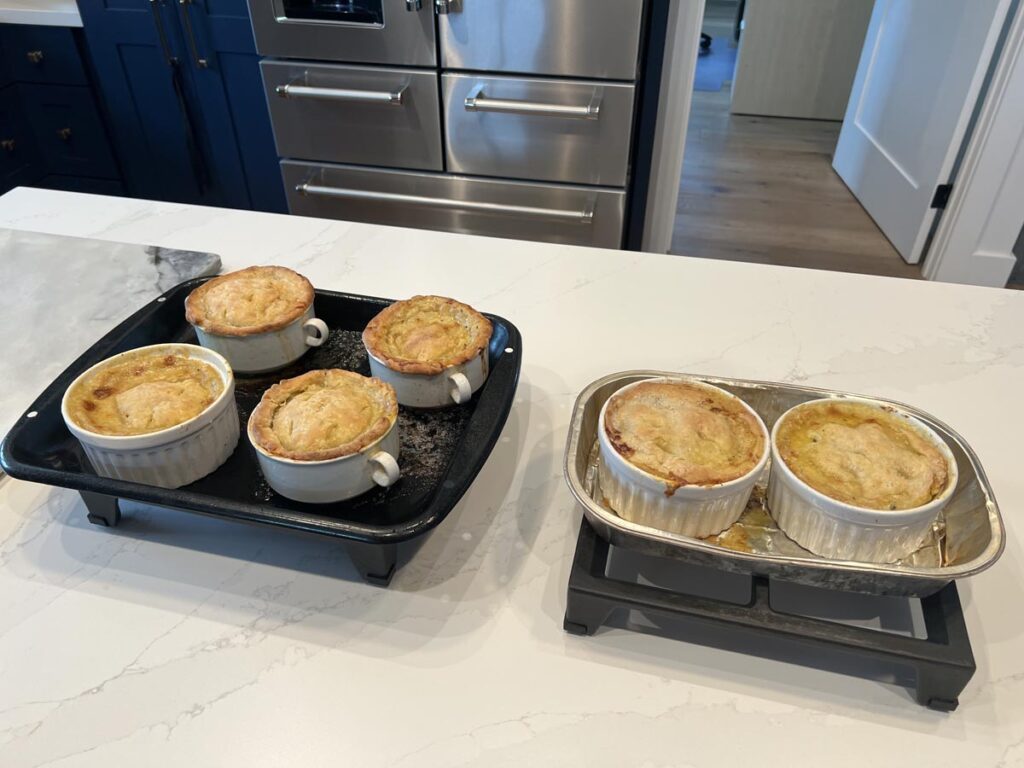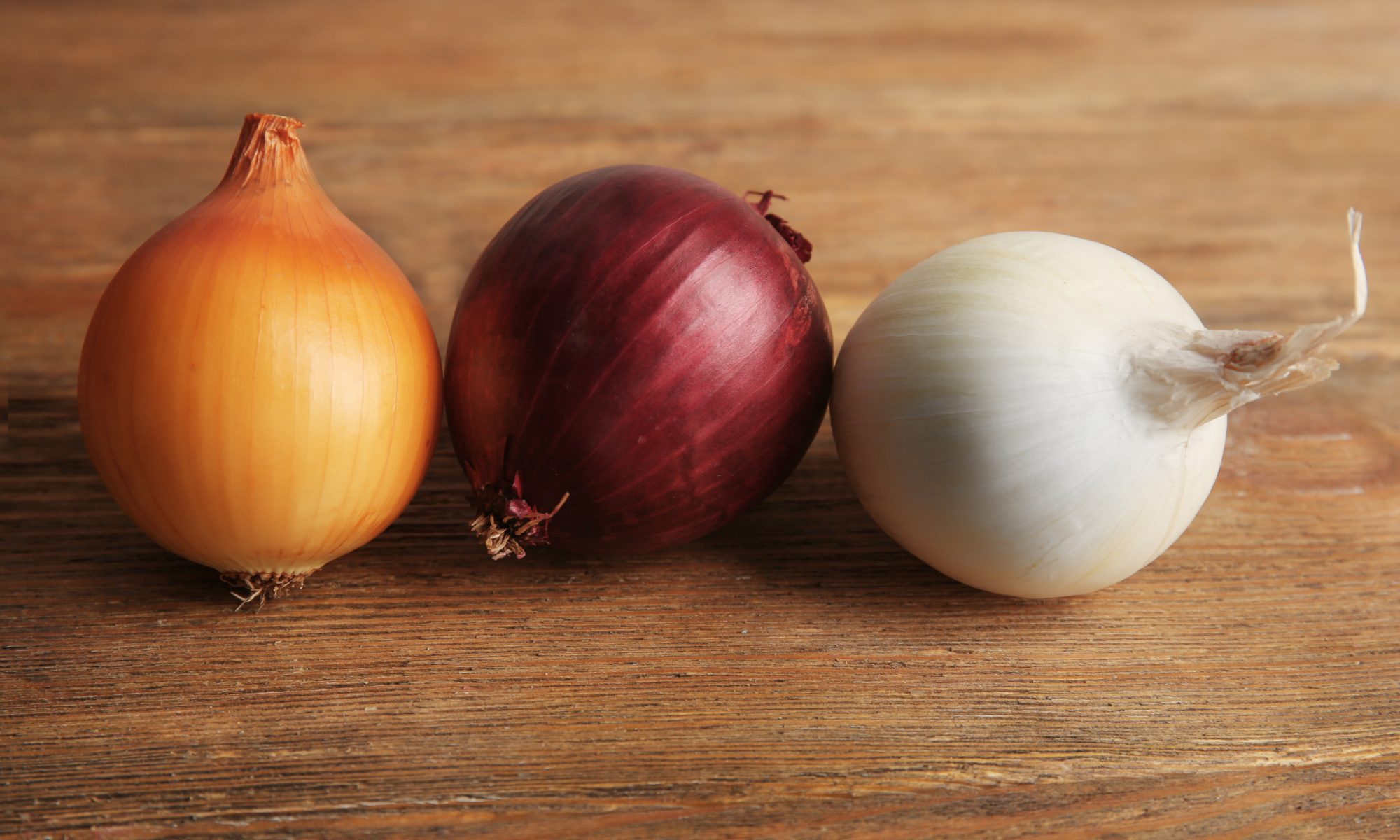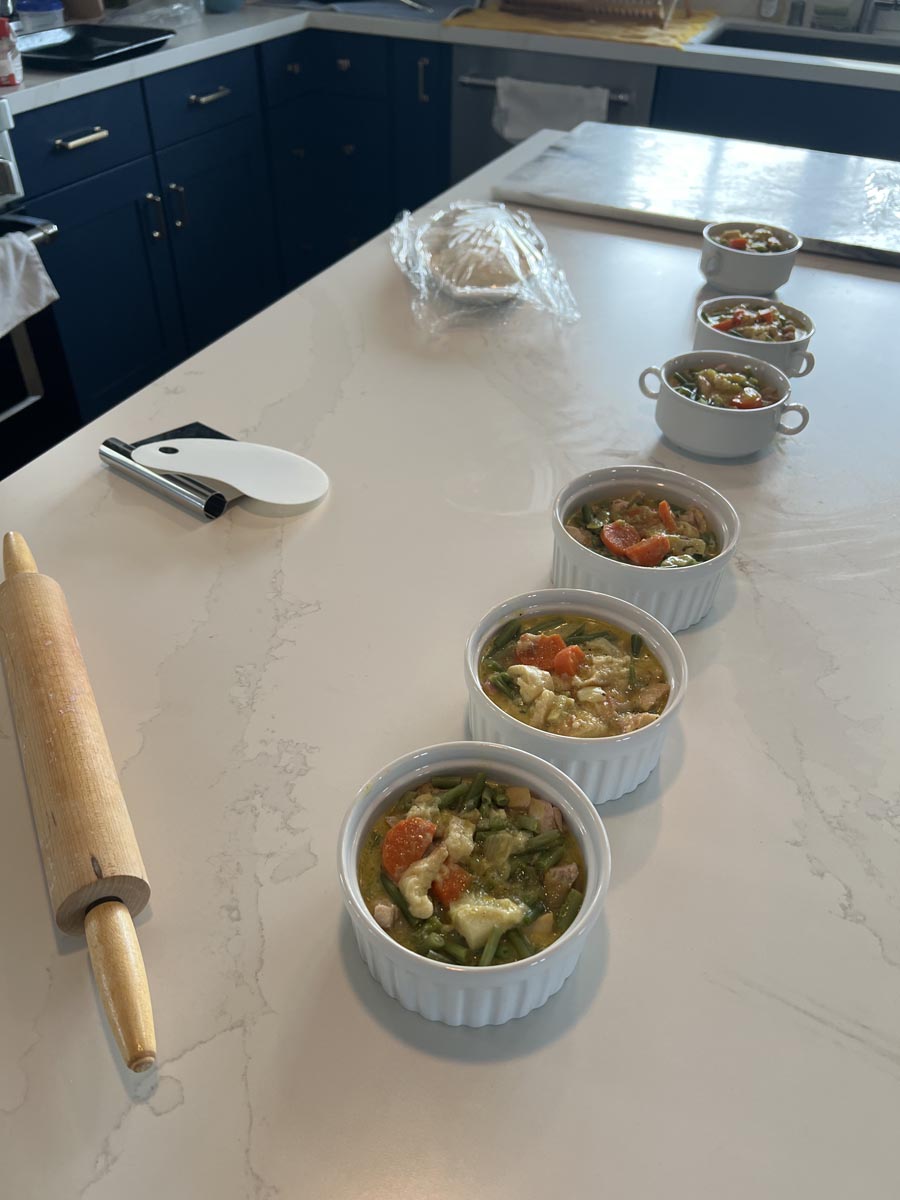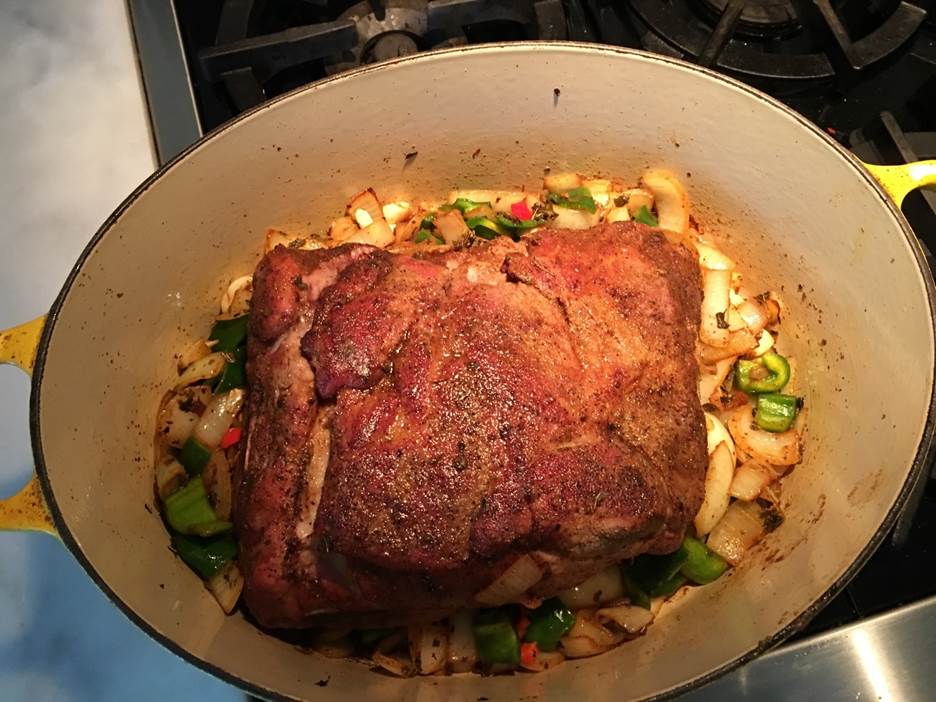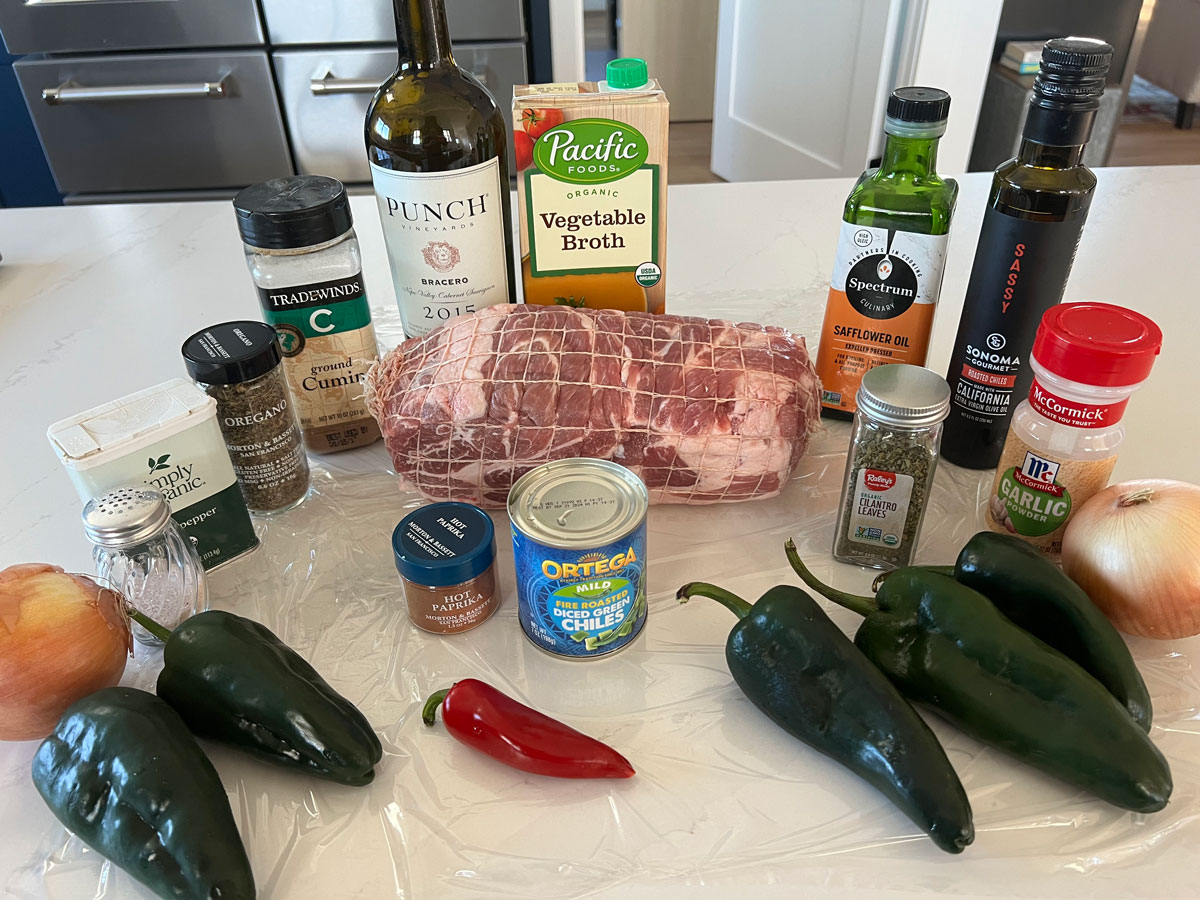Coincidentally, in March 2022 I posted a piece in the blog called Food Dreams, and the featured food was pot pies. In that case, the meat ingredient was rabbit.
Two years later, I am updating that post with some pie-making experiences of the past 6-7 weeks, or during the dreariest of winter months. Winters are more bearable around the holidays, because that is such a joyous time, with parties, gifts, celebrating the birth of Christ, a little extra wine, and more time for naps. Yet once you get past the first couple weeks of January, you enter that period comparable to any other session in which grinding is the best method to get through it. For survival, we make great, wintry meals, such as the classics: braised ribs served with creamy polenta, Osso Buco, again with polenta, though I like it with mashed potatoes, too, or chicken pot pies.
The following recipe sounds like more work than it is, but I have found breaking up the cooking in phases is a bit easier than all at once, I think the flavors are richer, if you:
- Make the dough one day, and refrigerate it
- Cook the chicken, stock and vegetables including the green beans the next day
- Make the thickening sauce and assemble the pies on the 3rd day
At the very least, you have to make the dough a day in advance so it is cold and can be manipulated into pie toppings. I own a KitchenAid and make the dough with the machine. I break up the shortening into smaller pieces that what the recipe calls for, and same for the butter, so it mixes more evenly. Once all the ingredients- except the water, are in the bowl, mix until the shortening and butter is broken down into small pieces, then pour the water in all at once while the mixture is on. Mix for about a minute, and it’s done. It should be sticky. So much so that you need flour on your hands to handle it. This batch makes enough dough for about 10 pot pies, if you like the crust on the thinner side, as I do. if you are making 8–10-inch fruit pies, it is probably enough for 4 crusts.
Pie dough
2 cups unbleached all-purpose flour
1 tsp salt
1 tsp sugar
1.5 sticks butter, cold
Half-cup shortening, chilled, cut into 4 pieces
One-half cup cold water
Pie filling (for 5-6 pies)
3 or 4 boneless, skinless chicken thighs
Olive oil for cooking the chicken
1 large onion, cut up good
2 cups chopped carrots
1.5 cups chopped celery
3+ cups chicken or vegetable stock
2 cups cut up green beans
Half-stick butter
¾ cup half & half or better yet, whipping cream (unwhipped)
1 Tablespoon Dijon mustard
2 brioche hamburger buns
Spices (for cooking the chicken): salt, pepper, garlic powder/granules, turmeric, harissa (not much), herbs de Provence, tarragon (not much)
Rinse the chicken then brine it in copious amounts of salt and warm water for at least 3 hours before rinsing, drying, and cooking.
In a 4-quarter pot, heat the olive, cook chicken and add the spices while cooking. I normally top the chicken while it is cooking with half the spices, and after turning them over to brown the other side, add the rest of the spice. Once cooked, remove the chicken to cool, add onions (and a little more olive oil) and cook until soft and golden, then add carrots, celery and stock and cover – and lower heat to simmer.
In a separate pot cook the green beans (I prefer French) and once done, drain and cool.
Using kitchen scissors, cut up the chicken into pieces and also the green beans (into 1-inch pieces). Leave on a plate for immediate assembly or if you are spreading out the pie-making over two days, store separately for ease of assembly. I also do it this way for better quantity control, or so the same amount of chicken and green beans are in each pot pie.
Once the vegetables and stock are done, turn heat off and store overnight, or keep going if you want to assemble the pies then.
In a bowl or measuring cup, put the cream in, then break up the brioche buns into small pieces and add them to the cream. Add the tablespoon of Dijon mustard, stir, let rest. This is the thickener to the pies, and easier than making a butter roux. The cream also gives the pies the color and texture you want.
If assembling the pies the next day, warm the stock and veggies after making the (cheater) roux.
Once the stock is warm, turn heat off and mix in roux.
Then assemble the pies.
First, ladle in (most of) the vegetables and juices
Add the chicken and green beans
Add a little more veggies and stock-roux, leaving enough room for the dough topping
Set aside the baking dishes
Cut the dough into enough sections to cover the number of pies you made
Press and role the dough and lay the sections over each ceramic dish
Drizzle olive oil on top and salt the top of the pies
Bake at 385 for about 25-30 minutes, until tops are brown
IT IS SUPER IMPORTANT TO BAKE THE PIES ON A BAKING DISH.
Unless you love cleaning messy ovens, because the pies inevitably bubble over and out of each ceramic dish. Not much, but enough to mess up your oven, big time.
Eat when cooled, though I have found them to be as good, perhaps better, when reheated another day.
For reheating, get oven to 400, then microwave the pie(s) for 1 minute, and place in oven (again, for insurance, on a baking dish) for 6-7 minutes to bring the crust up and heat the ingredients fully.
